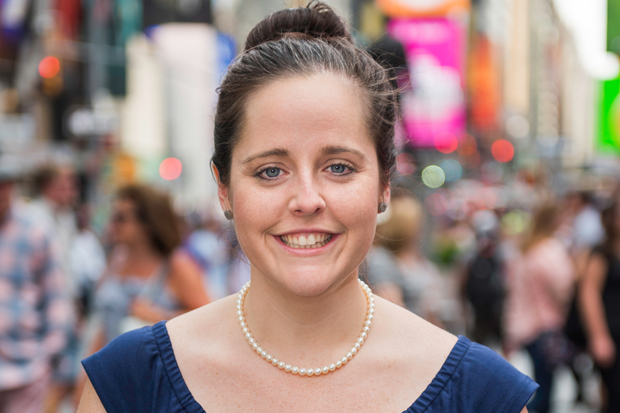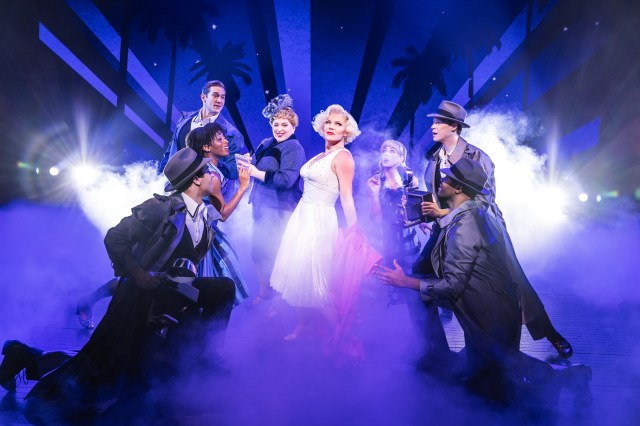Theater Producers Are Recruiting Your Friends to Sell You Tickets
The age of the social-media influencer has dawned off-Broadway.

(© Facebook)
If you're a theater producer, a full-page advertisement in The New York Times will set you back about six figures, depending on color and placement. While smaller ads cost less, the price still has the potential to burn through most marketing budgets off-Broadway, with uncertain returns. "Big overarching buys like subway ads are great if the show is a known entity," says Amanda Bohan. "But for something brand-new, that money can usually be better spent." Bohan is the president of ABM, a burgeoning theatrical marketing agency. She is keenly aware that, if harnessed correctly, social media can give smaller-scale producers unprecedented reach at a fraction of the cost of more traditional ad buys.
"I think with off- and off-off-Broadway, it's really important to understand that you don't have to reach everybody, because you only have what: 99 seats? 150 seats? You're not dealing with huge numbers," Bohan says. "It's really not that hard to fill those if you zone in on those niche audiences that you think really want to see your show. We see the most success when our clients let us do that. It's only 70 seats for Afterglow."
One of Bohan's most noteworthy clients is Afterglow, a little play about a polyamorous gay relationship that opened last June. Few people expected it to be anything more than a summer fling. But it has become the runaway hit of the off-Broadway season, with performances currently scheduled into summer 2018.

(© ABM)
Rio de Janeiro resident Igor Almeida booked a ticket on a recent trip to New York. While most tourists stick to Broadway, Almeida was enticed by an online ad for Afterglow. "I don't quite remember where I saw it," he says, "either on a Broadway-related website or Instagram." ABM's social media strategy has been a huge part of Afterglow finding its audience, and that strategy has relied heavily on inviting social media influencers to the show.
Influencers are people with a sizable social media following, but who aren't necessarily People Magazine famous. "Influencer doesn't mean celebrity," Bohan says. "A celebrity posting about your show may not actually have as much impact as a mom who has the attention of 20,000 local moms who are ready to buy tickets."
Meet Michael Bucaram, a fashion student in New York City with an Instagram chock-full of salacious and scantily clad selfies. "I consider myself a micro-influencer," he says, explaining that this means anyone with a following under 50,000. With 35,000 Instagram followers, he's certainly not keeping up with the Kardashians, but he does have 70,000 thirsty eyes trained in his direction, many of them gay men in the New York metro area. For a show like Afterglow, that's gold.
Bucaram received an invitation to Afterglow last November and decided to see the show with his boyfriend, who is also named Michael. The only request from ABM was that he share his thoughts on Instagram afterward.
"@afterglowtheplay is truly something to see," he enthused. "We laughed, cried, and shared an emotional moment." With reviews like that, who really needs The New York Times?
"I think of myself as a member of the press," Bucaram says before noting that this is his first post about theater, and he can count the number of plays he's seen in New York on one hand. "I do makeup and cosmetics and fashion mostly, so I was surprised they approached me." But Afterglow isn't necessarily looking for its influencers in the crowd waiting outside the stage door for Hello, Dolly!

(© Mati Gelman)
"Not every gay guy wants to sit and watch naked men shower together," Bohan says about one of the more remarked-upon aspects of the show. "You have to be very open to that kind of thing, obviously." One look at Bucaram's Instagram gives you an immediate sense of his level of openness, and that of his followers.

(© Instagram)
For Bucaram and his fellow Instagrammers, the art of attracting an audience has been turned into a science through the accumulation of hard data. "I check my analytics dashboard every day," he says, eager to show off how Instagram slices and dices his followers by age, sex, and location. While much of his following is local, he does have a surprisingly large fan base in Brazil.
Data has been essential for Bohan when it comes to convincing her clients about where to commit their marketing budgets. "When I was starting out, it was a lot about sentiment and general assumptions," she says. "But now it's really nice to have those stats and say to clients, 'This is who's responding. This is where they live. This is their age, this is their general interest, and now let's find more people like them.' It's using the analytical side of social media to back up what you're actually doing."
Bohan sees all of this as a digital spin on time-honored theater marketing traditions. "It's reverting back to the practice of giving tickets to bartenders and hairdressers — which we still do, by the way," she hastens to add. "This is the same thing, but online. It's really all about asking the question, 'Who is a person that other people trust to make a recommendation?' "
Time will tell whether or not our online "friends" will maintain our trust, but right now Americans are increasingly turning to social media to decide where to spend their money, and theater producers are doing the same.










